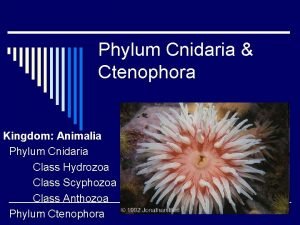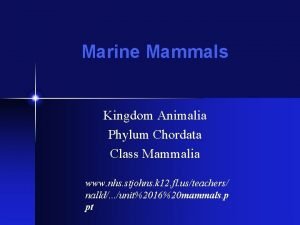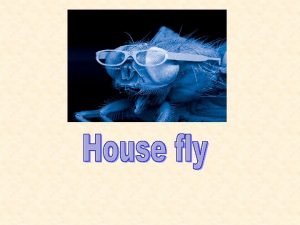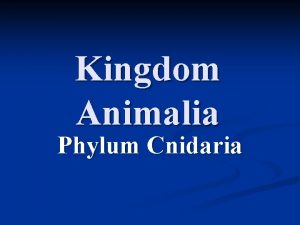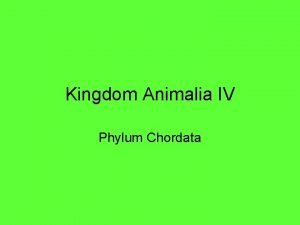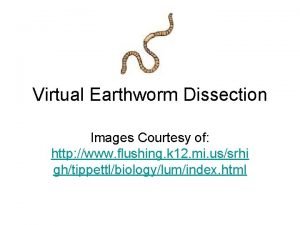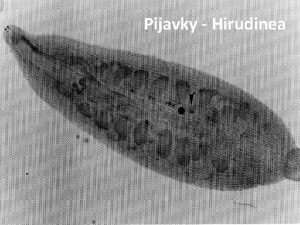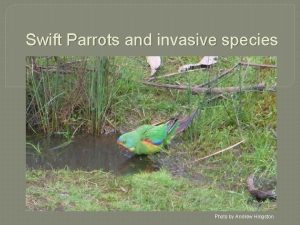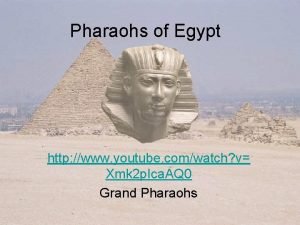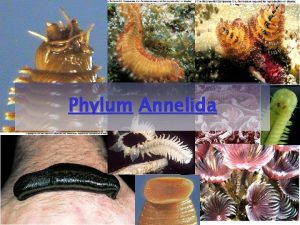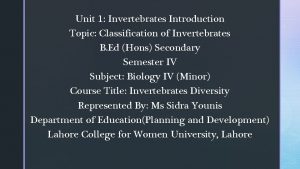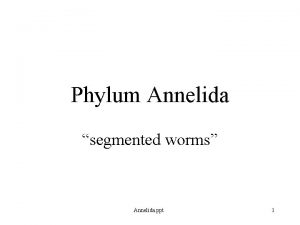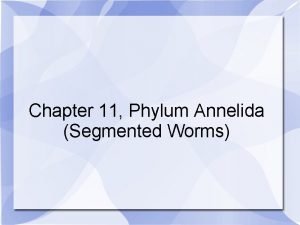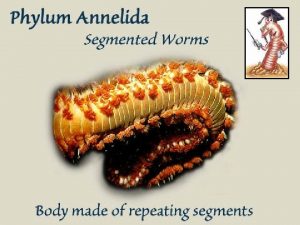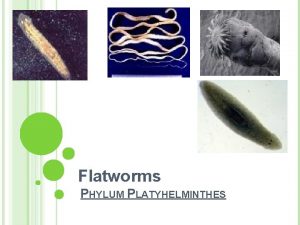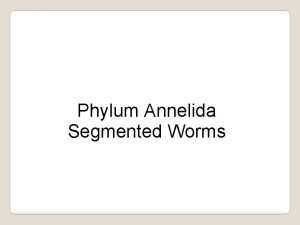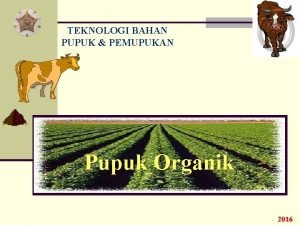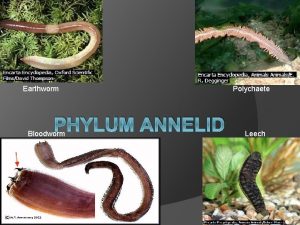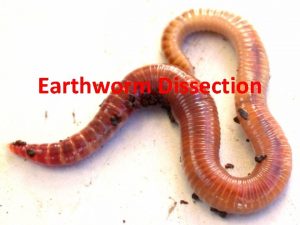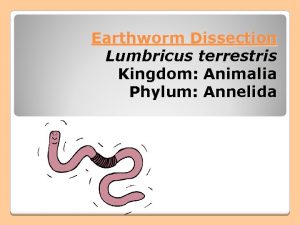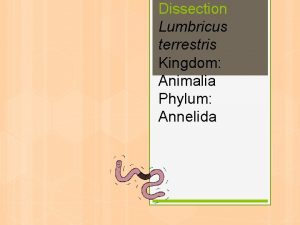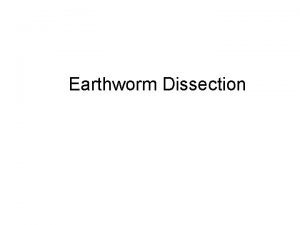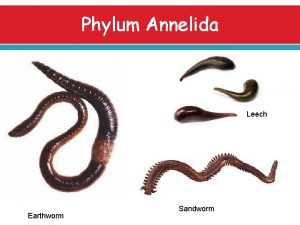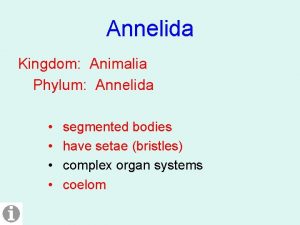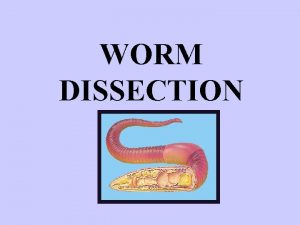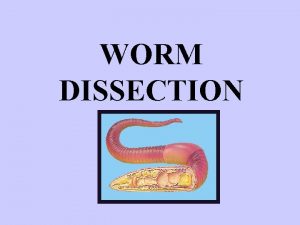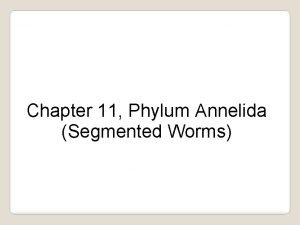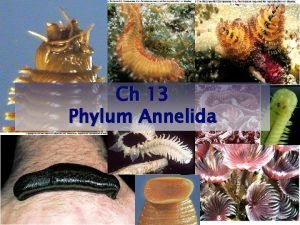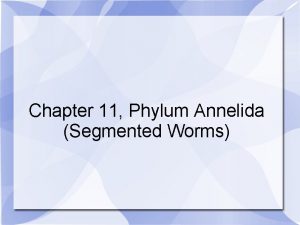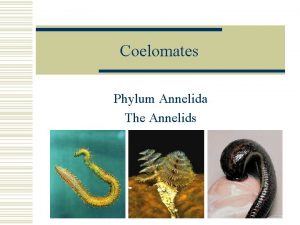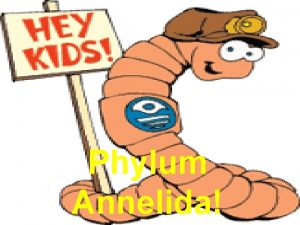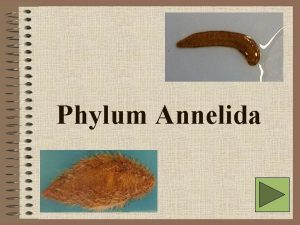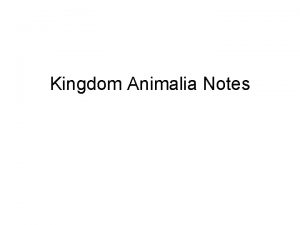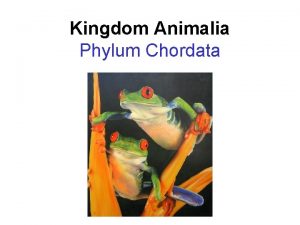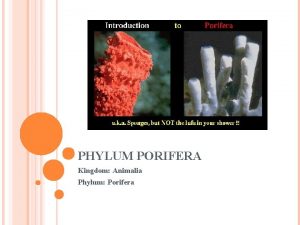Earthworm Dissection Lumbricus terrestris Kingdom Animalia Phylum Annelida

Earthworm Dissection Lumbricus terrestris Kingdom: Animalia Phylum: Annelida

Students should Identify the following • • • Segments Septum Setae Pharynx Esophagus Crop Gizzard Intestine Aortic Arches Ventral Nerve Cord • • Dorsal Blood Vessel Clittelum Seminal Vesicles Seminal Receptacles

Students should know the following terminology • • • Invertebrate Castings Hermaphroditic Hydrostatic Skeleton Closed Circulatory System

Students will use the following tools for the earthworm dissection • • Scalpel Probes Dissecting Pins Rubber Padded Dissecting Tray

Scalpel

Probe

Dissecting Pins

Dissecting Pan

Before you start dissecting, find the following: • Mouth • Setae – the bristles used for locomotion. They are located by rubbing your fingers along the earthworm’s body. They are often times easier to feel than to see. • Sperm Duct • Clittelum

Mouth

Sperm Duct

Clittelum

Mouth Pin your worm at the tip of the mouth and at its midpoint.

Continue your cut to the mouth Start your incision 2 cm behind the clittelum. Make sure not to cut too deeply.

Begin to separate the skin using pins

Pin the skin back as you go along the cut. Angle your pins outward so that are out of the way.

As you pin the skin back, take your probe and break the partitions between the segments. These are called Septum.


Pharynx

Aortic Arches – Earthworms have 5 pair of these simple hearts.

Aortic Arch

Seminal Vesicles

Seminal Receptacles

Crop

Gizzard

Intestine Dorsal Blood Vessel

Ventral Nerve Cord

Ventral Nerve Cord

Brain

Nerve Cord and Brain

Brain
- Slides: 31

